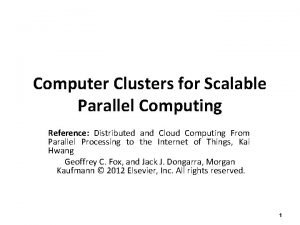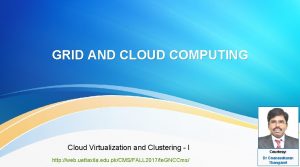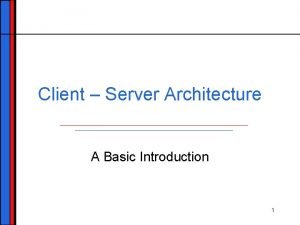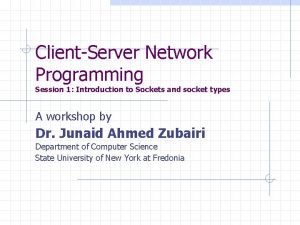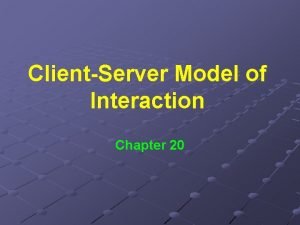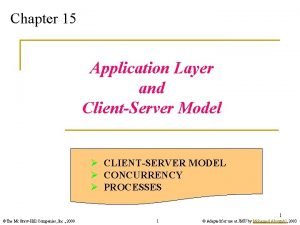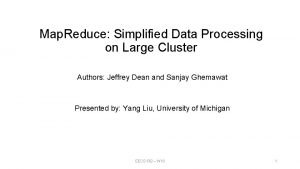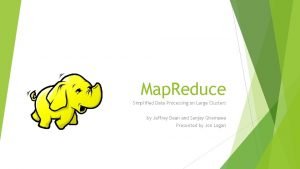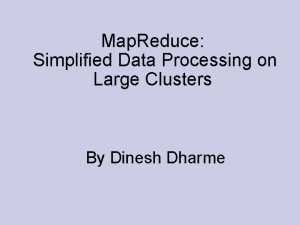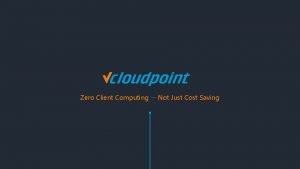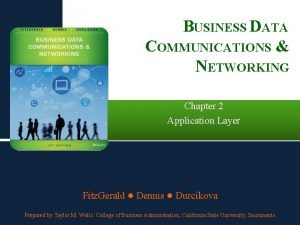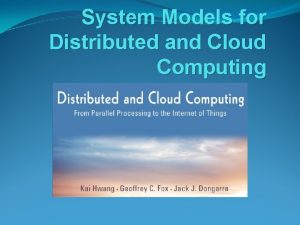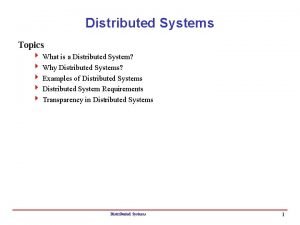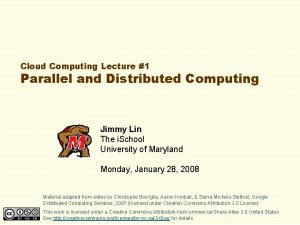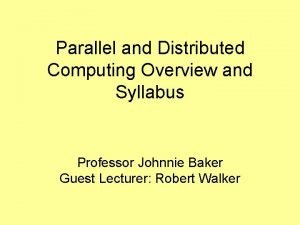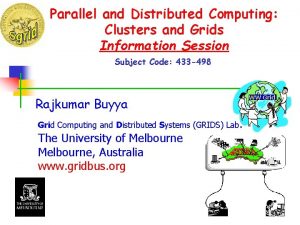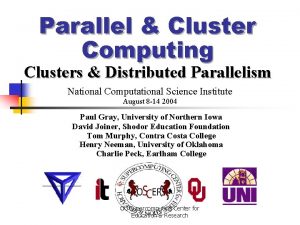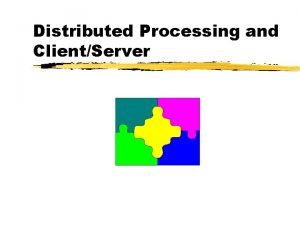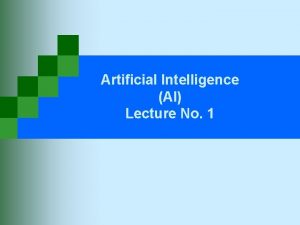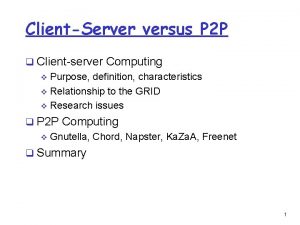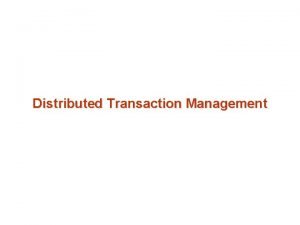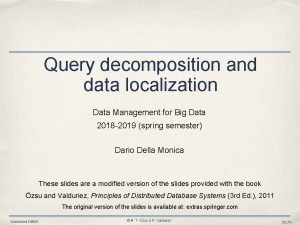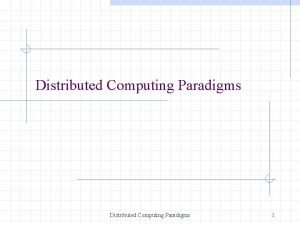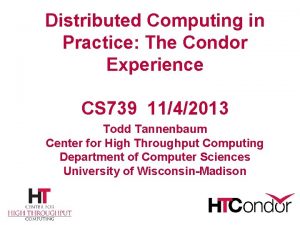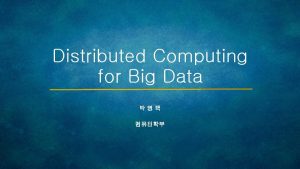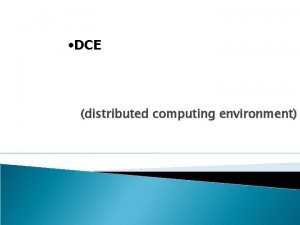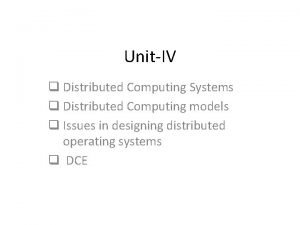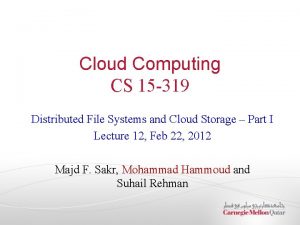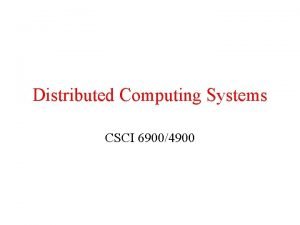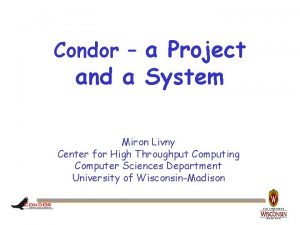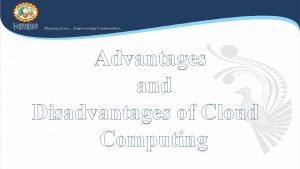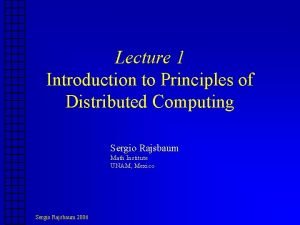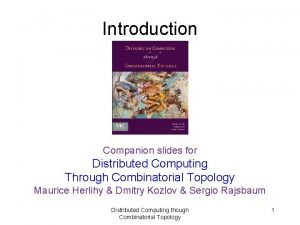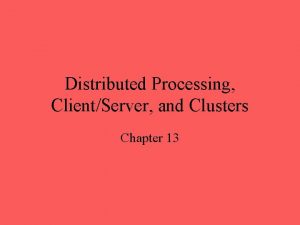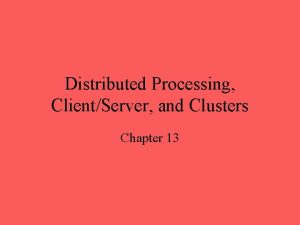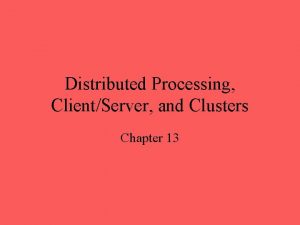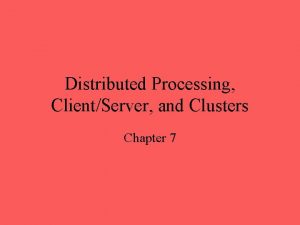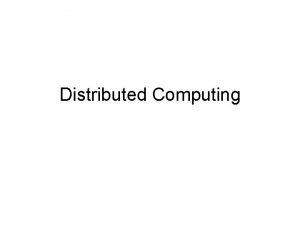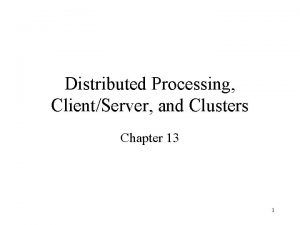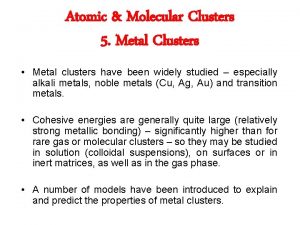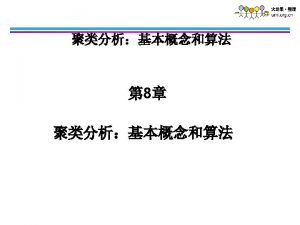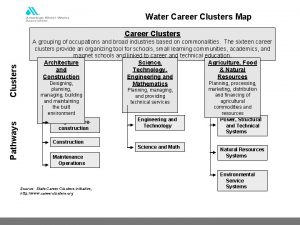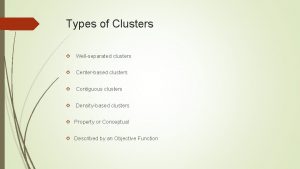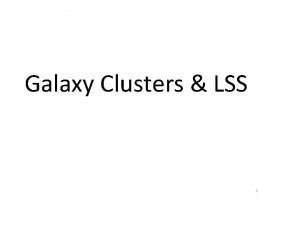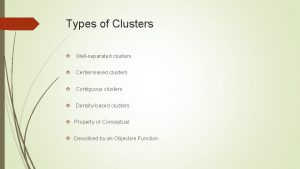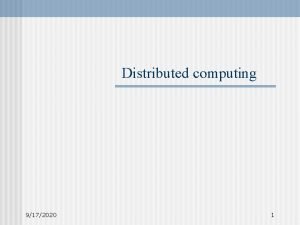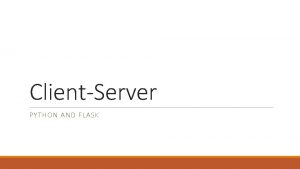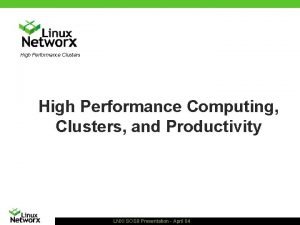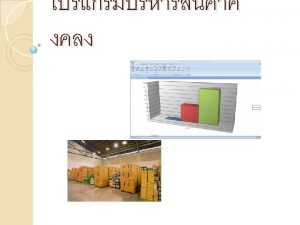Distributed Processing ClientServer and Clusters ClientServer Computing Client

Distributed Processing, Client/Server, and Clusters

Client/Server Computing • Client machines are generally single-user PCs or workstations that provide a highly userfriendly interface to the end user • Each server provides a set of shared user services to the clients • The server enables many clients to share access to the same database and enables the use of a high-performance computer system to manage the database


Client/Server Applications • Basic software is an operating system running on the hardware platform • Platforms and the operating systems of client and server may differ • These lower-level differences are irrelevant as long as a client and server share the same communications protocols and support the same applications


Client/Server Applications • Actual functions performed by the application can be split up between client and server • Optimize platform and network resources • Optimize the ability of users to perform various tasks • Optimize the ability to cooperate with one another using shared resources

Database Applications • The server is a database server • Interaction between client and server is in the form of transactions – the client makes a database request and receives a database response • Server is responsible for maintaining the database




Classes of Client/Server Applications • Host-based processing – not true client/server computing – traditional mainframe environment

Classes of Client/Server Applications • Server-based processing – server does all the processing – user workstation provides a graphical user interface

Classes of Client/Server Applications • Client-based processing – all application processing done at the client – data validation routines and other database logic function are done at the server

Classes of Client/Server Applications • Cooperative processing – application processing is performed in an optimized fashion – complex to set up and maintain

Three-Tier Client/Server Architecture • Application software distributed among three types of machines – User machine • thin client – Middle-tier server • Gateway • Convert protocols • Merge/integrate results from different data sources – Backend server


File Cache Consistency • File caches hold recently accessed file records • Caches are consistent when they contain exact copies for remote data • File-locking prevents simultaneous access to a file


Middleware • Set of tools that provide a uniform means and style of access to system resources across all platforms • Enable programmers to build applications that look and feel the same • Enable programmers to use the same method to access data




Distributed Message Passing • Message passed used to communicate among processes • Send and receive messages as used in a single system OR • Remote procedure calls

Basic Message-Passing Primitives

Reliability Versus Unreliability • Reliable message-passing guarantees delivery if possible – Not necessary to let the sending process know that the message was delivered • Send the message out into the communication network without reporting success or failure – Reduces complexity and overhead

Blocking Versus Nonblocking • Nonblocking – Process is not suspended as a result of issuing a Send or Receive – Efficient and flexible – Difficult to debug • Blocking – Send does not return control to the sending process until the message has been transmitted – OR does not return control until an acknowledgment is received – Receive does not return until a message has been placed in the allocated buffer

Remote Procedure Calls • Allow programs on different machines to interact using simple procedure call/return semantics • Widely accepted • Standardized – Client and server modules can be moved among computers and operating systems easily


Client/Server Binding • Binding specifies the relationship between remote procedure and calling program • Nonpersistent binding – logical connection established during remote procedure call • Persistent binding – connection is sustained after the procedure returns

Synchronous versus Asynchronous • Synchronous RPC – Behaves must like a subroutine call • Asynchronous RPC – Does not block the caller – Enable a client to invoke a server repeatedly so that it has a number of requests in the pipeline at one time

Object-Oriented Mechanisms

Clusters • Alternative to symmetric multiprocessing (SMP) • Group of interconnected, whole computers working together as a unified computing resource – illusion is one machine – system can run on its own

Benefits of Clusters • Absolute scalability – Can have dozens of machines each of which is a multiprocessor • Incremental scalability – Add new systems in small increments • High availability – Failure of one node does not mean loss of service • Superior price/performance – Cluster can be equal or greater computing power than a single large machine at a much lower cost

Clusters • Separate server – Each computer is a separate server – No shared disks – Need management or scheduling software – Data must be constantly copied among systems so each is current

Clusters • Shared nothing – Reduces communication overhead – Several servers connected to common disks – Disks partitioned into volumes – Each volume owned by a computer – If computer fails another computer gets ownership of the volume
- Slides: 35
